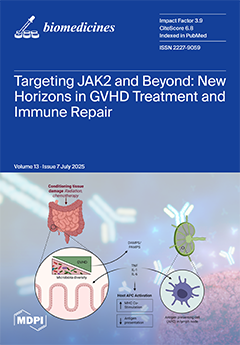Background/Objectives: Doxorubicin (DOX), a widely used anthracycline chemotherapeutic agent, is recognized for its efficacy in treating various malignancies. However, its clinical application is critically limited due to dose-dependent cardiotoxicity, predominantly induced by oxidative stress and compromised antioxidant defenses. Photobiomodulation (PBM), a non-invasive intervention that utilizes low-intensity light, has emerged as a promising therapeutic modality in regenerative medicine, demonstrating benefits such as enhanced tissue repair, reduced inflammation, and protection against oxidative damage. This investigation sought to evaluate the cardioprotective effects of PBM preconditioning in human-induced pluripotent stem cell-derived ventricular cardiomyocytes (hiPSC-vCMs) subjected to DOX-induced toxicity.
Methods: Human iPSC-vCMs were allocated into three experimental groups: control cells (untreated), DOX-treated cells (exposed to 2 μM DOX for 24 h), and PBM+DOX-treated cells (preconditioned with PBM, utilizing 660 nm ±10 nm LED light at an intensity of 10 mW/cm
2 for 500 s, delivering an energy dose of 5 J/cm
2, followed by DOX exposure). Cell viability assessments were conducted in conjunction with evaluations of oxidative stress markers, including antioxidant enzyme activities and malondialdehyde (MDA) levels. Furthermore, transcriptional profiling of 40 genes implicated in cardiac dysfunction was performed using TaqMan quantitative polymerase chain reaction (qPCR), complemented by analyses of protein expression for markers of cardiac stress, inflammation, and apoptosis.
Results: Exposure to DOX markedly reduced the viability of hiPSC-vCMs. The cells exhibited significant alterations in the expression of 32 out of 40 genes (80%) after DOX exposure, reflecting the upregulation of markers associated with apoptosis, inflammation, and adverse cardiac remodeling. PBM preconditioning partially restored the cell viability, modulating the expression of 20 genes (50%), effectively counteracting a substantial proportion of the dysregulation induced by DOX. Notably, PBM enhanced the expression of genes responsible for antioxidant defense, augmented antioxidant enzyme activity, and reduced oxidative stress indicators such as MDA levels. Additional benefits included downregulating stress-related mRNA markers (
HSP1A1 and
TNC) and apoptotic markers (
BAX and
TP53). PBM also demonstrated gene reprogramming effects in ventricular cells, encompassing regulatory changes in
NPPA, NPPB, and
MYH6. PBM reduced the protein expression levels of IL-6, TNF, and apoptotic markers in alignment with their corresponding mRNA expression profiles. Notably, PBM preconditioning showed a diminished expression of BNP, emphasizing its positive impact on mitigating cardiac stress.
Conclusions: This study demonstrates that PBM preconditioning is an effective strategy for reducing DOX-induced chemotherapy-related cardiotoxicity by enhancing cell viability and modulating signaling pathways associated with oxidative stress, as well as inflammatory and hypertrophic markers.
Full article






